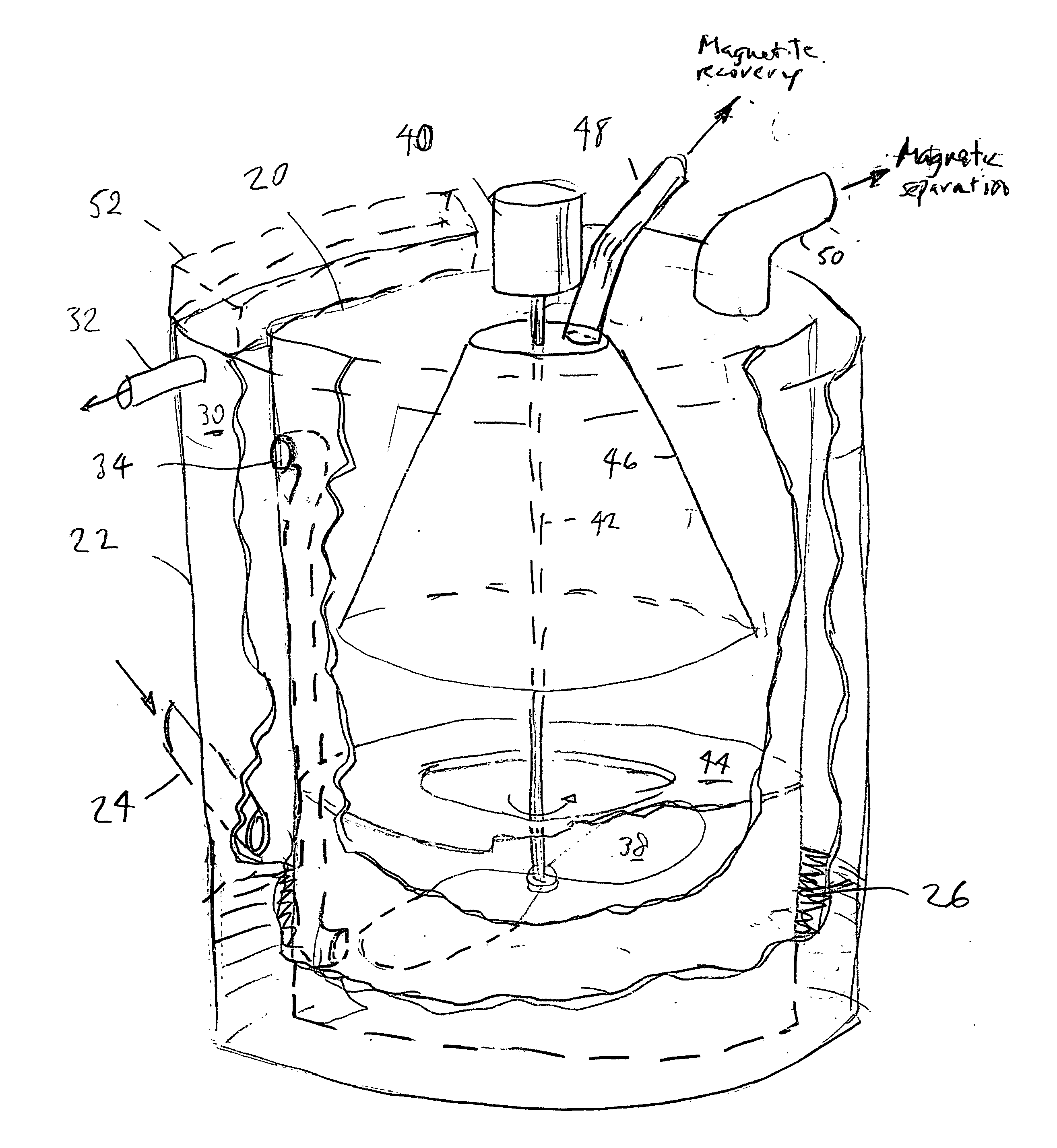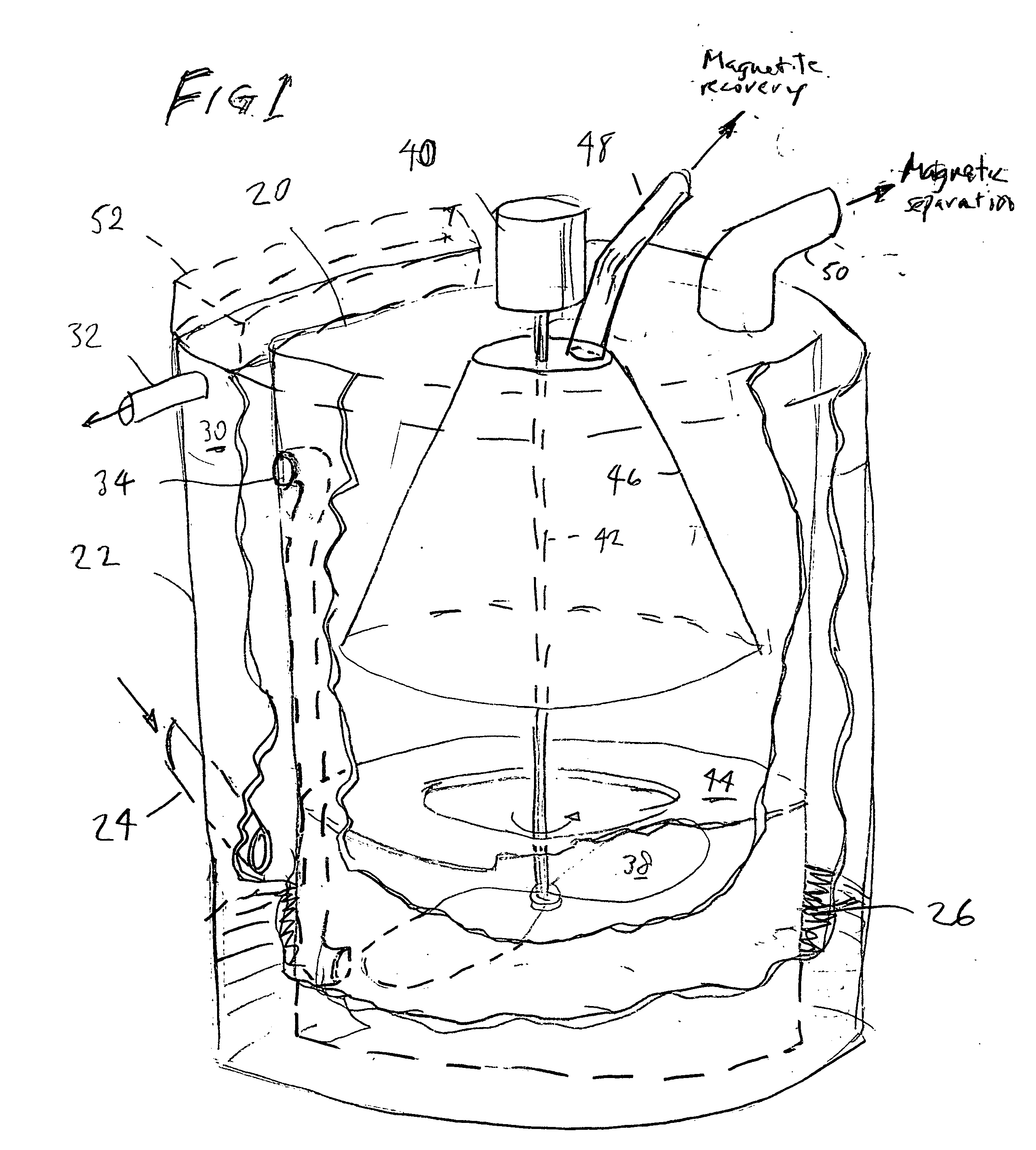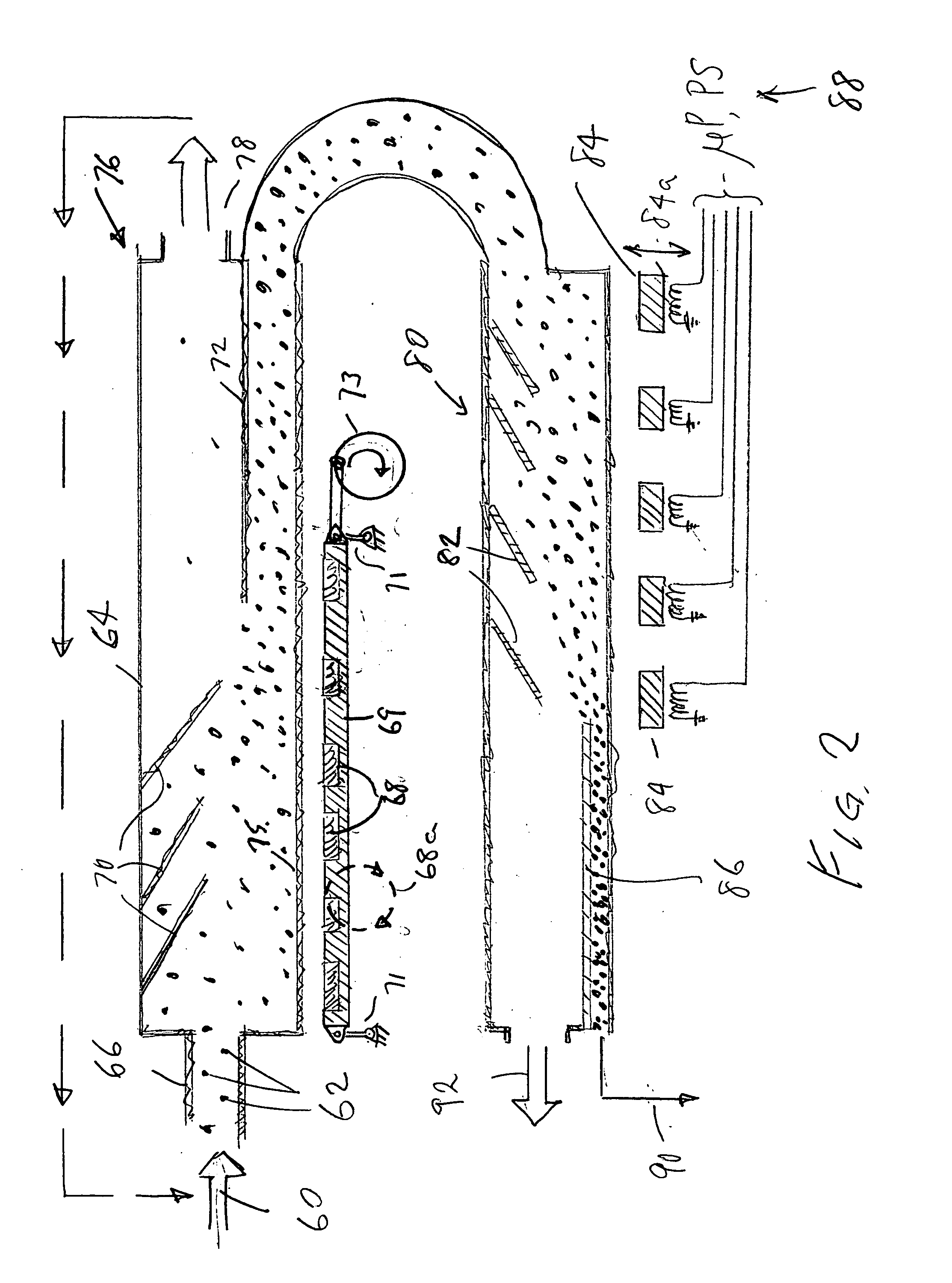Water treatment using magnetic and other field separation technologies
a magnetic and field separation technology, applied in magnetic separation, separation processes, filtration separation, etc., can solve the problem of not effectively removing fine pollutant particles, and achieve the effect of simple design, low cost and simple cost structur
- Summary
- Abstract
- Description
- Claims
- Application Information
AI Technical Summary
Benefits of technology
Problems solved by technology
Method used
Image
Examples
Embodiment Construction
[0032] As described above, according to a first important aspect of the invention, vortex separation is combined with magnetic separation, and both are performed in the same tank. That is, the magnetic particles and the flocculant are introduced, and flocculation takes place, in the same tank where vortex separation is performed. The combination of these process steps in a single piece of apparatus makes it possible to design an efficient system to remove fine particles from large quantities of water. Actual separation of the composite magnetic particles formed upon flocculation may require an additional apparatus. In an alternative embodiment, useful where settleable solids such as silt, floating debris, and fine particles may all be present, this apparatus can further comprise equipment for removing settleable and floating pollutants as well.
[0033] As noted, it is within the invention to refit certain preexisting equipment, e.g. existing vortex separators used for removing grit a...
PUM
| Property | Measurement | Unit |
|---|---|---|
| magnetic | aaaaa | aaaaa |
| magnetic field | aaaaa | aaaaa |
| length | aaaaa | aaaaa |
Abstract
Description
Claims
Application Information
 Login to View More
Login to View More - R&D
- Intellectual Property
- Life Sciences
- Materials
- Tech Scout
- Unparalleled Data Quality
- Higher Quality Content
- 60% Fewer Hallucinations
Browse by: Latest US Patents, China's latest patents, Technical Efficacy Thesaurus, Application Domain, Technology Topic, Popular Technical Reports.
© 2025 PatSnap. All rights reserved.Legal|Privacy policy|Modern Slavery Act Transparency Statement|Sitemap|About US| Contact US: help@patsnap.com



